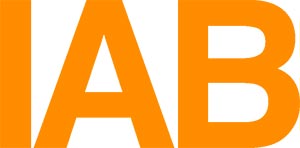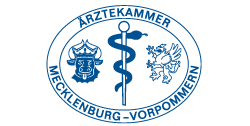FAQ
Here you will find some information to frequently asked questions about neurological movement disorders, their therapy, the way to experts, and why it is relevant to become active yourselves. And of course you learn how IAB can support you.
What does neurological movement disorders mean?
Movement disorders include about one-fifth of the total neurological diseases and are one of the main areas of Neurology. The most common movement disorders are Parkinson’s syndrome, dystonia, spasticity, cerebral palsy and tremor. Rarer movement disorders include tics, chorea and psychogenic movement disorders. The incidence of movement disorders in society is increasing as many of these diseases are age-related.
One of the main activities of IAB is to promote and introduce neurological movement disorders to physicians and health professionals and to the society as well.
What are the main therapeutic approaches for movement disorders?
The treatment options for movement disorders have improved significantly in recent years. In Parkinson’s syndrome, classic drug therapy has made significant progress. In addition, deep brain stimulation, duodopa therapy and apomorphine therapy have been developed. In dystonia, significant advances have been made through botulinum toxin therapy. Deep brain stimulation also offers additional therapy options here and in tremor.
The task of IAB is to publicize the knowledge about the manifold new therapy options.
Which further therapy options are available?
Complementary therapies include mainly physiotherapy, occupational therapy, speech therapy and, in more severe cases, special care. As with all chronic diseases, there are many different therapy methods without evidence are also offered for movement disorders. Some of them may be meaningful, others are speculative, and patients and their families may be financially abused because of their level of suffering and knowledge.
IAB gives hints and information.
Does it make sense to contribute to the therapy planning as a patient or a relative?
An active role in therapy planning and delivery is crucial for the success of the therapy. The patient must understand the therapeutic approach, support the conduct of therapy, and provide decisive feedback to the therapist. Without a basic understanding of the therapeutic approach sufficient motivation of the patient can not be achieved.
IAB provides education for patients and relatives through its website, through publications, regional meetings and events organized by the IAB Academy.
What are the challenges in the treatment of movement disorders?
Many of the new therapies are complex. They have to be run by specialists. At the same time, the patient’s independent guidance or recommendations become more and more important in order to select the optimal therapy for the individual case and the stage of the disease. Since movement disorders are almost always chronic and a definitive cure is almost impossible to achieve so far, these therapies must be planned in the long term and the combination of of many parallel therapeutic approaches as well. Therefore, the team of therapists has to act rehearsed and coordinated well. This includes not only physicians but also health professionals. Optimal therapy should therefore be multimodal (i.e., a combination of many therapeutic approaches) and interdisciplinary (i.e., a collaboration of many therapists).
IAB aims to promote the interdisciplinary and multimodal approach to the treatment of movement disorders.
How does IAB help to improve the treatment of movement disorders?
IAB is a platform for all topics related to movement disorders. IAB provides training for physicians ans health professionals, as well as for patients and relatives. For this regular regional group meetings, but also different event formats take place. Newer is the IAB Academy, which offers certified training especially for health professionals. In some cases, patients and relatives may attend events organized by the IAB Academy. IAB offers communication for all who are interested in movement disorders. The platform of this communication is the IAB website at www.iabnetz.de. On this website you will find health professionals and physicians with special knowledge of movement disorders listed. In addition, there are links to national and international patient organizations and associations that are active in this area. IAB establishes public awareness selecting and discussing current topics related to motor disorders.
IAB also offers a wide range of materials to train therapists to accompany and monitor specific therapies and to educate patients and their relatives. Particularly successful are the consensus statements, which deal scientifically with special topics and set international standards in the treatment of movement disorders.
How can I find out if I am ill with a neurological movement disorder?
Neurological movement disorders can show themselves through additional movements. These may include persistent muscle cramping, short jerking muscle twitching, complex movement patterns, wavy muscle spasms triggered by external stimuli, or tremors. Frequently, muscle overactivity causes pain. Neurological movement disorders can be noticed by minor movements as well. The movements of the patient are reduced and restricted, slowed down and stiff.
Information on neurological movement disorders can be found on the website and in the various publications of IAB. Further helpful information is also exchanged at the meetings of the IAB Regional Groups and at the events of the IAB Academy.

Upcoming Events
2025
25th Satellite Group Meeting Child North – Online Meeting
Case reviews from your own ranks
For request to participate or further questions contact us.
2025
60th Meeting Hannover / Online Meeting
The detailed program for this evening follows.
For request to participate or further questions contact us.
2025
44th Meeting Berlin / Online Meeting
Animal-assisted therapy for movement disorders using dogs with Bea Fahl, Norderstedt
For request to participate or further questions contact us.











